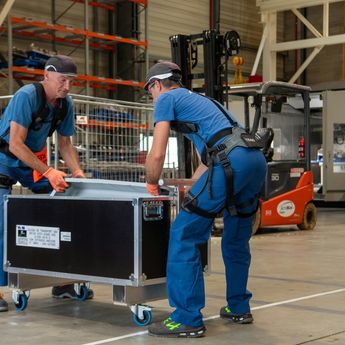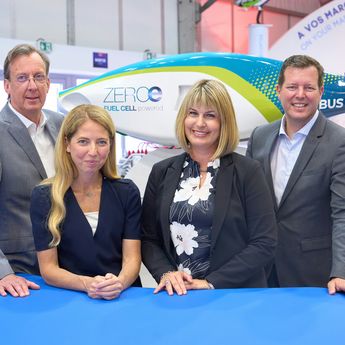CIMON*, the International Space Station’s first “free flyer,” integrates artificial intelligence to support a broad range of activities
Astronauts on the International Space Station have a highly-capable new “assistant” at their disposal: CIMON (Crew Interactive MObile Companion), a revolutionary, AI-based robot developed for Germany’s DLR Space Administration by Airbus and IBM.
CIMON – which is about the size of a medicine ball – was launched to the ISS on a demonstration mission earlier this year and evaluated by German astronaut Alexander Gerst during the European Space Agency’s (ESA) Horizons mission conducted between June and October.

The power of artificial intelligence
Trained by Airbus and IBM, the robotic assistant is powered by Watson – an IBM question-answering supercomputer that makes use of artificial intelligence and allows businesses to integrate it into their operations. Watson enables CIMON to learn continuously and engage with the astronauts. In the future, it also will integrate virtual reality and augmented reality technology.
The hardware includes standard and infrared cameras, two USB ports and a screen that presents procedure-related data such as photos, videos or documents. When inactive, it shows CIMON’s “face” – an emoticon-style display. Additionally, CIMON features a private button that astronauts can press if they do not want the assistant participating in their conversations. The 3D-printed mechanical structure, which is a little over 30 cm. in diameter and weighs 5 kg., is made of plastic and metal.

Becoming a part of the team
As the first form of artificial intelligence on an ISS mission, CIMON can support a broad range of duties on the in-orbit science base. Its main role is supporting astronauts and their work; the robotic assistant can collect data through build-in sensors and cameras – and analyze it to offer solutions to problems. Its infrastructure can be used to make use of the Internet of Things, further enabling data-collection and simplifying astronauts’ work and life.
CIMON will have a full scope of possible interactions with the crew, from serving as a work support and warning systems to communicating directly with astronauts and providing a communication link with ground control. The AI assistant can bring valuable benefits to missions to space.
By helping the crews to perform tasks more efficiently and increasing spacecraft safety, it is sure to minimise stress levels and improve their overall mission experience. While some functions are still in development, CIMON will be able to identify effective countermeasures against stress and psychological effects, including “earth out of sight” and “group think.” It is meant to both interact socially and assist during complex procedures. The system is created in a way that will allow it to become a real colleague to astronauts – albeit a robotic one.


Read more Innovation news
Continue Reading

Airbus and partners complete successful wake energy retrieval trials
Press Release
Innovation
Airbus and partners complete successful wake energy retrieval trials
Combating information warfare: How Airbus is helping win the fight for the truth
Web Story
Defence

Powering production and protecting people with exoskeletons
Web Story
Innovation

Airbus and MTU Aero Engines advance on hydrogen fuel cell technology for aviation
Press Release
Innovation
Airbus and Critical Software explore strategic partnership in embedded software…
Press Release
Innovation
